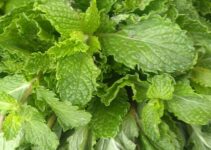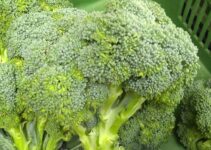What is okra?
Okra is known by various names, viz. gumbo, ladyfinger, and Bhindi. Okra or lady’s finger is loaded with many important minerals, vitamins and nutrients. It contains potassium, vitamin B, vitamin C, folic acid, calcium, low in calories, and fibre and antioxidants. It comes under essential crops in many countries because of its nutritional value. The leaves, buds, flowers, pods, stems, and seeds of this warm-season vegetable are used.

Different names of okra
- English: Lady’s finger
- Hindi: Bhindi
- Gumbo: In the United States
- Guino-gombo: In Spain
- Guibeiro: In Portugal
Scientific classification of okra
- Kingdom: Plantae
- Class: Angiosperm
- Order: Malvales
- Family: Malvaceae
- Genus: Abelmoschus
- Species: A. esculentus
Okra varieties
The different varieties of okra are:
- Red burgundy
- Emerald
- Louisiana green velvet
- Clemson spineless
- Dwarf green long pod
- Hastings improved Perkins
- Annie Oakley
- UGA Red
- Lee
- Chinese okra
- Purple okra
What is the nutritional value of okra?
As per the U.S. Department of Agriculture (USDA), about 100 grams of okra contains the following nutrients. It has energy (33 cal), protein (1.9g), fat (0.2g), carbohydrate (7.5g), fibre (3.2g), sugar (1.5g), vitamin K (31.3 mg), potassium (299mg), sodium (7mg), vitamin C (23mg), thiamine (0.2mg), magnesium (57mg), calcium (82mg), vitamin B6 (0.215 mg), folate(60mcg) and vitamin A (36mcg). Besides this, it also contains iron, niacin, phosphorous, and copper. Okra is also rich in antioxidants with biochemical compounds like phenolic and flavonoids, which are associated with anti-microbial and anti-inflammatory properties.
What are the benefits of okra?
- Loaded with fibre: Okra is known for an adequate amount of fibre. The eight medium size okra contains about 3 grams of fibre. Because of the high amount of fibre, it is beneficial in the case of digestion and reduces hunger cravings.
- Weight loss: The high level of fibre in the ladyfinger helps to cut hunger cravings and gives the feeling of a full stomach. Thus, the regular eating of okra ensures the shedding of extra fat from the body. Therefore, it is good for those who want to lose fat naturally.
- Stress buster: A study has been conducted in mice wherein it has been found that the okra seeds have antioxidants, which have anti-stress features. Since it helps reduce stress, it acts on lowering blood sugar as pressure spikes sugar levels in the blood.
- Anti-fatigue: The use of Bhindi helps to reduce fatigue intensity in the body. The combination of ladyfinger in your diet, including the right amount of exercise, ensures it works for a more extended period and keeps you active.
- Pregnancy and breastfeeding: Folate is an important nutrient for pregnant and breastfeeding mothers. Lack of folate leads to pregnancy loss, child health problems, and conditions like spina bifida. The doctor also suggests an adequate amount of folate during pregnancy, where the ladyfinger can play a vital role.
- Osteoporosis: Okra contains an adequate amount of vitamin K, which is good for the health of bone, especially in strengthening and preventing fractures.
- Gastrointestinal health: Okra is packed with dietary fibre, which is good for the smooth functioning of the digestive system. The eating of okra also helps to fight against inflammation and irritation because of its anti-inflammatory and antimicrobial properties.
- Great for skin: The right amount of vitamin C present in okra helps to rejuvenate skin cells and collagen. Thus, it is good for keeping your skin younger.
- Shining hair: Apply the mix of boiled okra and lemon juice after it gets cooled on the hair and leave it for a few minutes, followed by washing it through shampoo. The regular use of it for a fortnight helps to give shining hair.
- Diuretic: The consumption of okra helps to remove toxins from the body. It also prevents water retention in the body.
Tips for cooking: How to cook okra?
It is straightforward to cook okra. Before cooking, buying okra is an important aspect. Always purchase soft and green ones from the market. If its tip breaks easily, the piece is soft and good for cooking. It should be washed before cutting. It may be made of gravy or fried. If you want the fried one, simply cut it into two or four parts vertically. Add oil, green chilli, salt, and onion simultaneously and cook it on a low flame. It is better to warm the oil first. The form of cooking is the gravy. For this, first, cut onion and chilly into pieces. Add oil to the pan and put spices as required into it. Make it simple: fry for a while, then put the cutting okra as mentioned above. After some time, add water and leave it for 15-20 minutes till it becomes soft and the gravy seems thicker.
Okra recipes
Since it is an important vegetable and is used in making multiple cuisines. The various recipes of it are:
- Easy roasted okra
- Roasted corn and okra
- Gravy okra
- Okra and non-veg., especially chicken and mutton.
- Sweet potato gumbo with cornbread muffins.
Okra side effects
The various risks and precautions of eating lady’s finger are:
- Okra contains fructans, which can cause gas, diarrhoea, and bloating.
- Ladyfinger contains a high amount of oxalate, which is responsible for kidney stones.
- Bhindi has a bio-substance called solanine, which may cause inflammation, including pain and arthritis.
- It contains a good amount of vitamin K, vital in blood clotting. Thus, it may counteract those who take blood-thinning medications like warfarin, coumadin, etc.
- A study confirms that it reduces sexual functions in males by lowering tested weight and position. It also reduces sperm count.
- Those men who need children should consult a physician if they are using okra regularly
- It causes allergy during harvesting.





